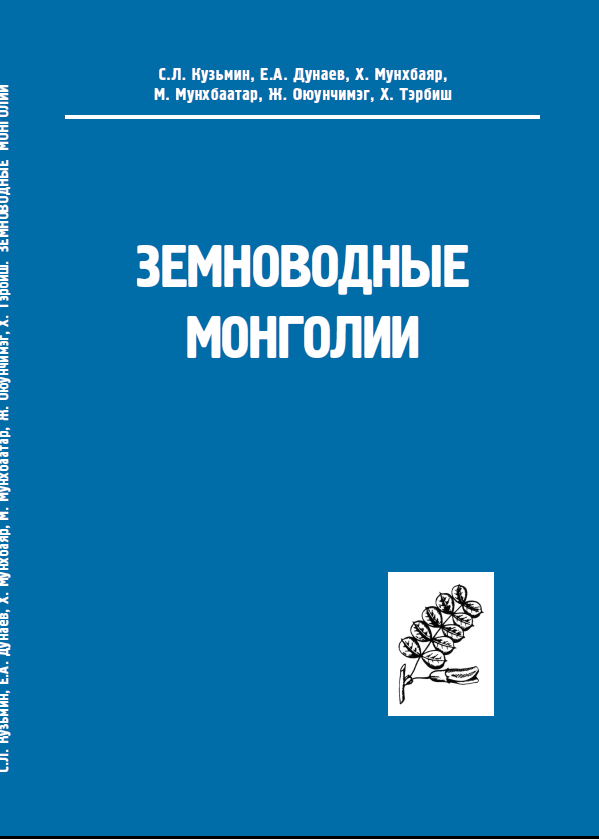|
Description
Vomerine teeth present. Posterior part of the tongue free and forked. Toes webbed. Omosternum and sternum ossified. Pupil of the eye horizontal. Snout moderately sharp. Male with internal guttural vocal sacs. Flank and thigh skin smooth to slightly granular. Dorsal coloration brown, pallid, olive or greyish, with dark spots, which are sometimes absent. Temporal spot large. Lower surface of the hind part of belly and the hind legs with pallid orange-pink. Male differs from female by having paired guttural vocal sacs and nuptial pads on the first finger.
Distribution and Habitat
Country distribution from AmphibiaWeb's database: China, Korea, Democratic People's Republic of, Mongolia, Russian Federation
The range of the forms designated here as R. chensinensis covers a large part of China (Sichuan, Gansu, Shaanxi, Shanxi, Henan, Hebei, Liaoning, Jilin and Heilongjiang provinces, as well as Tibet, Ninxia-Hui and Inner Mongolia autonomous regions) and Eastern Mongolia. The species lives mainly in wood regions, but also occurs in unwooded areas. It displays a high ecological plasticity living in a variety of habitats. This frog lives in forests of different types, bushlands, swamps and marshes, near mountain and plain streams and brooks etc. In China it seems to be more of a mountain than plain dweller.
Life History, Abundance, Activity, and Special Behaviors
The frog is not rare in many places (the abundance may exceed a hundred individuals per hectare), but peripheral populations seem to be small and isolated. The appearance after hibernation and the reproduction takes place from February to June, depending on latitude and altitude. Males form breeding choruses. Amplexus is pectoral (axillary). The clutch contains 800-1500 eggs. Metamorphosis takes place in summer.
Tadpoles feed mainly upon algae, detritus and higher plants, adults upon invertebrates, mainly arthropods. In dry, steppe regions this frog spends a considerable part of time near water bodies, and aquatic organisms (e.g., Gammaridae) comprise a considerable part of its diet.
Relation to Humans
Rana chensinensis does not avoid human inhabited areas and often occurs in anthropogenic landscapes, where it is subject to the same threats as majority of other anurans. In addition, this frog is used in traditional Chinese medicine. Special farms are used for breeding of this frog in China.
Comments
Rana chensinensis belongs to the 'brown frog' species group. In the past (and sometimes at present), these frogs have been considered as the species R. temporaria Linne, 1758. Later studies revealed R. chensinensis to be a species complex, studies of which are in progress. These studies have revealed significant genetic and morphological distinctions between populations from the type territory of Rana chensinensis David, 1875 sensu stricto (Shaanxi Province of China) and the populations of the Rana chensinensis complex from other areas, including those in China (e.g., Beijing area). Consideration of some of these populations as separate species now is more or less commonly accepted (R. ornativentris, R. dybowskii, R. pirica); status of others is the subject of discussion. Here I conventionally use the species name R. chensinensis for those populations of the R. chensinensis complex whose taxonomic status remains unrevised.
 Read more about The Amphibians of Mongolia by Kuzman 2017 (PDF) Read more about The Amphibians of Mongolia by Kuzman 2017 (PDF)
References
Bannikov, A. G., Darevsky, I. S., Ishchenko, V. G., Rustamov, A. K., and Szczerbak, N. N. (1977). Opredelitel Zemnovodnykh i Presmykayushchikhsya Fauny SSSR [Guide to Amphibians and Reptiles of the USSR Fauna]. Prosveshchenie, Moscow.
Fei, L. (1999). Atlas of Amphibians of China. Henan Publishing House of Science and Technology, Zhengzhou.
Kuzmin, S. L. (1999). The Amphibians of the Former Soviet Union. Pensoft, Sofia-Moscow.
Liu, C.C. (1950). Amphibians of Western China. Chicago Natural History Museum, Chicago.
Liu, C.C. and Hu, S.C. (1961). [Tailless Amphibians of China]. Kexue Chubangshe, Beijing.
Ma, C. (1991). Breeding of Chinese Wood Frogs. Chinese Forestry Press, Beijing.
Matsui, M., Bassarukin, A.M., Kasugai, K., Tanabe, S. and Takenaka, S. (1994). ''Morphological comparisons of brown frogs (genus Rana) from Sakhalin, Hokkaido and Primorsk.'' Alytes, 12(1), 1-14.
Matsui, M., Wu, G. and Song, M. (1993). ''Morphometric comparisons of Rana chensinensis from Shaanxi with three Japanese brown frogs.'' Japanese Journal of Herpetology, 15(1).
Tanaka-Ueno, T., Matsui, M., Sato, T., Takenaka, S. and Takenaka, O. (1998). ''Phylogenetic relationships of brown frogs with 24 chromosomes from Far East Russia and Hokkaido assessed by mitochondrial cytochrome b gene sequences (Rana: Ranidae).'' Zoological Science, 15(2), 289-294.
Vorobyeva, E. I. and Darevsky, I. S. (eds.) (1988). Amphibians and Reptiles of Mongolian People's Republic: General Problems. Amphibians.. Moscow.
Ye, C., Fei, L., and Hu, S. Q. (1993). Rare and Economic Amphibians of China. Sichuan Publishing House of Science and Technology, Chengdu.
Zhao, E. and Adler, K. (1993). Herpetology of China. Society for the Study of Amphibians and Reptiles, Oxford, Ohio.
Zhao, E. and Zhao, H. (1994). Chinese Herpetological Literature: Catalogue and Indices. Chengdu University of Science and Technology, Chengdu.
Originally submitted by: Sergius L. Kuzmin (first posted 1999-11-10)
Edited by: Kellie Whittaker (2017-03-05)Species Account Citation: AmphibiaWeb 2017 Rana chensinensis: Chinese Brown Frog <https://amphibiaweb.org/species/5005> University of California, Berkeley, CA, USA. Accessed May 12, 2025.
Feedback or comments about this page.
Citation: AmphibiaWeb. 2025. <https://amphibiaweb.org> University of California, Berkeley, CA, USA. Accessed 12 May 2025.
AmphibiaWeb's policy on data use.
|





 Map of Life
Map of Life Read more about The Amphibians of Mongolia by Kuzman 2017
Read more about The Amphibians of Mongolia by Kuzman 2017